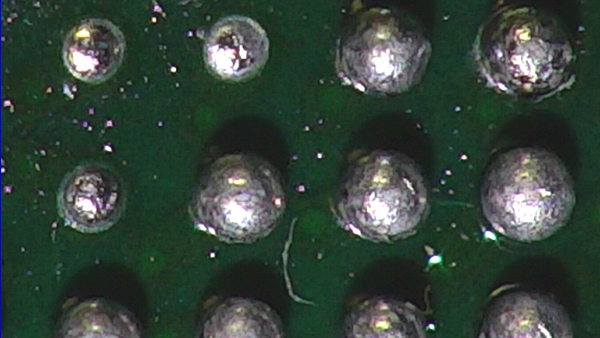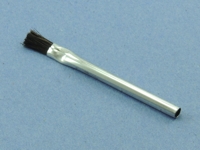|
Outline
This procedure outlines the inspection method and pass/fail criteria to be used during the final inspection of BGA Component Deballing and Reballing to ensure compliance with Work Order requirements.
|
|||||||||||||||||||||||||||||||||||||||||||||||
|
Procedure
Moisture Sensitive Device Control
Reballing Inspection Procedure
Disposition of Rejected Components |
|||||||||||||||||||||||||||||||||||||||||||||||
Images and Figures
BGA Component Reball Inspection

Figure 1. Crushed solder spheres. This is a reject condition.

Figure 2. Excessive flux and oxidation. This is a reject condition.

Figure 3. Substrate damage. This is a reject condition.

Figure 4. Missing solder spheres. This is a reject condition.
|
|||||||||||||||||||||||||||||||||||||||||||||||
9.1.3 BGA Component Reball Inspection
Procedure covers guidelines for inspection of reballed BGA components.
Minimum Skill Level: Expert
Conformance Level: High
REQUEST FOR QUOTE GUIDES INDEX

BGA Component Reball Inspection

Crushed solder spheres. This is a reject condition.

Excessive flux and oxidation. This is a reject condition.

Substrate damage. This is a reject condition.

Missing solder spheres. This is a reject condition.

For help with BGA rework, contact the globally recognized authority, trusted by aerospace, defense, and electronics manufacturers.
LEARN MORE
SLIDESHOW STARTING
❮
❯













